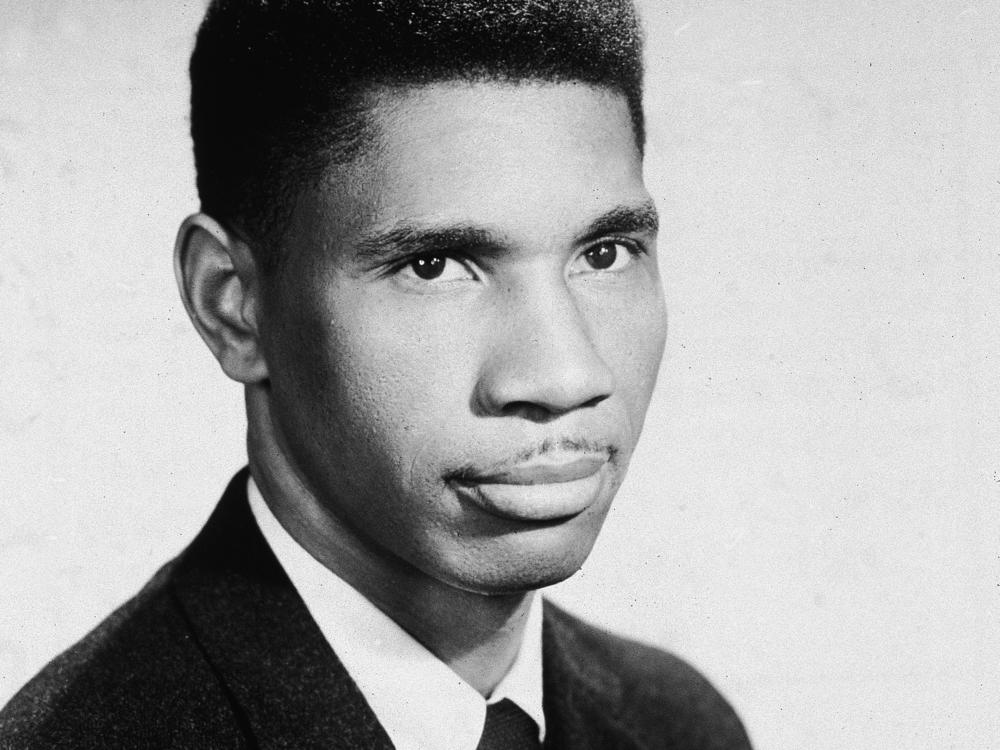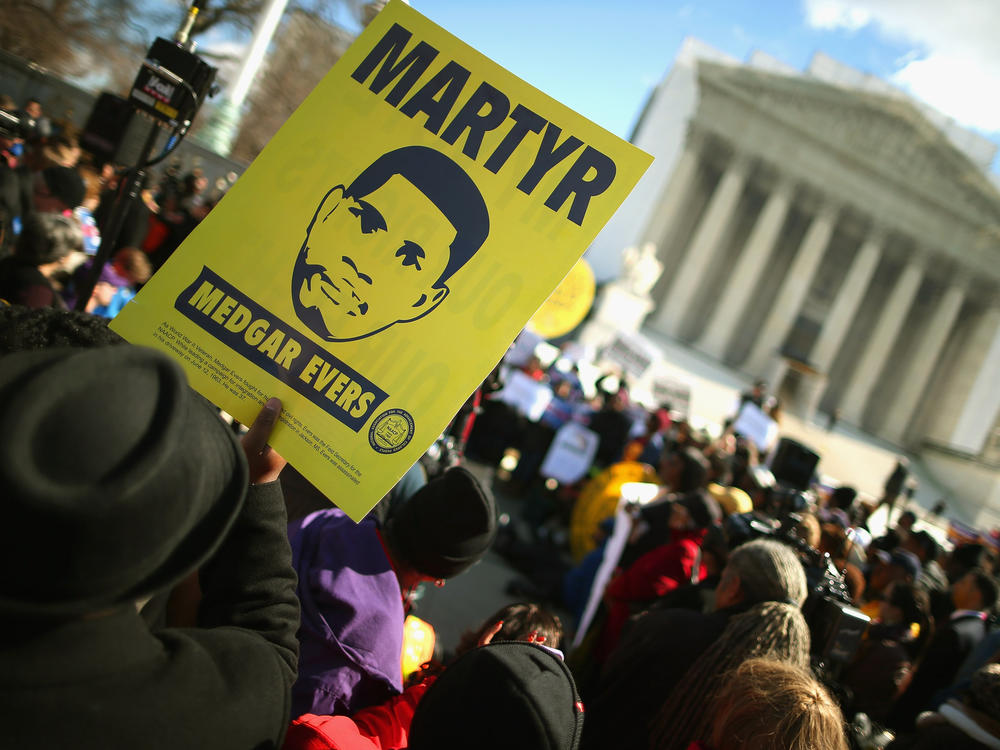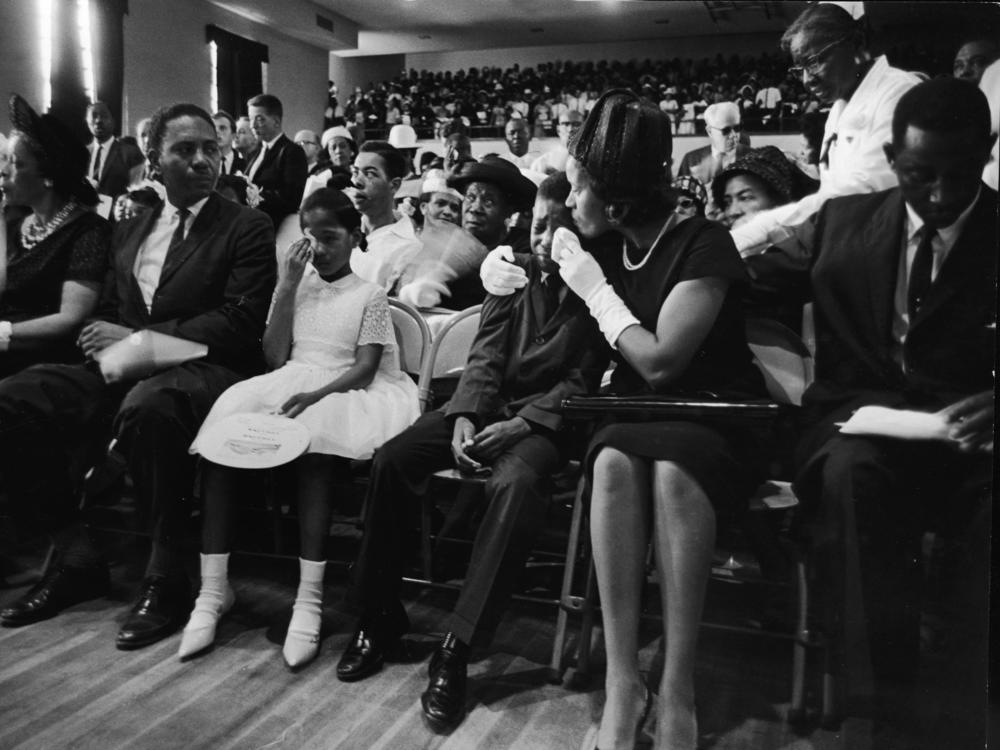Section Branding
Header Content
60 years ago, Medgar Evers became a martyr of the Civil Rights Movement
Primary Content
Shortly after midnight on June 12, 1963 — 60 years ago today — civil rights organizer Medgar Evers pulled into his driveway in Jackson, Miss.
He stepped out of his Oldsmobile carrying shirts that read "Jim Crow Must Go."
Then, in a vacant lot about 40 yards away, a sniper fired a single shot from a high-powered rifle at Evers' silhouette.
Evers' wife, Myrlie, rushed outside to find him bleeding in the driveway. He was taken to University Hospital in Jackson and died in the ER. He was 37.
Only a few hours earlier, President John F. Kennedy had addressed the Civil Rights Movement on TV. Now one of its most prominent figures was gone — murdered by a member of the Ku Klux Klan who wouldn't be brought to justice for more than 30 years.
Fighting for freedom at home
While civil rights leaders like Martin Luther King Jr. pushed for equality across the U.S., Evers focused his efforts on his native Mississippi. He worked as the NAACP's first field secretary in the state.
Evers led boycotts of white-owned businesses that refused business to Black customers and held voter registration drives for Mississippi's Black population. He also fought to overturn segregation in public spaces.
One of Evers' most famous moments of activism came when he applied to law school at the all-white University of Mississippi. After the Supreme Court ruled in Brown v. Board of Education that segregation in public schools was unconstitutional, Evers partnered with the NAACP to see if the new law was being enforced.
It wasn't. Evers was rejected because of the color of his skin. But he carried out a long campaign to integrate the university, paving the way for future generations of Black students.
Always in danger
Evers' growing stature as a Black leader attracted hostility from white supremacists.
"Medgar became No. 1 on the Mississippi to-kill list," his widow, Myrlie Evers-Williams, told NPR in 2013. "And we never knew from one day to the next what would happen. I lived in fear of losing him. He lived being constantly aware that he could be killed at any time."
Despite receiving violent threats, Evers often spoke of his affection for home. In 1958, he wrote a magazine article titled "Why I Live in Mississippi."
"It may sound funny, but I love the South," Evers wrote. "I don't choose to live anywhere else. ... There is room here for my children to play and grow and become good citizens if the white man will let them."
After his younger brother's death, Charles Evers carried on Medgar's legacy. Himself a civil rights activist, Charles Evers helped transform Mississippi politics, becoming the state's first Black mayor of a biracial town in 1969.
"Medgar and I said many years ago: If it ever ends, the violent racism in this state, it'd be the greatest state in the world to live in," he told NPR in 2003. "And now, Medgar, I know you're gone, but I'm telling you, son, it's come to pass."
Copyright 2023 NPR. To see more, visit https://www.npr.org.



